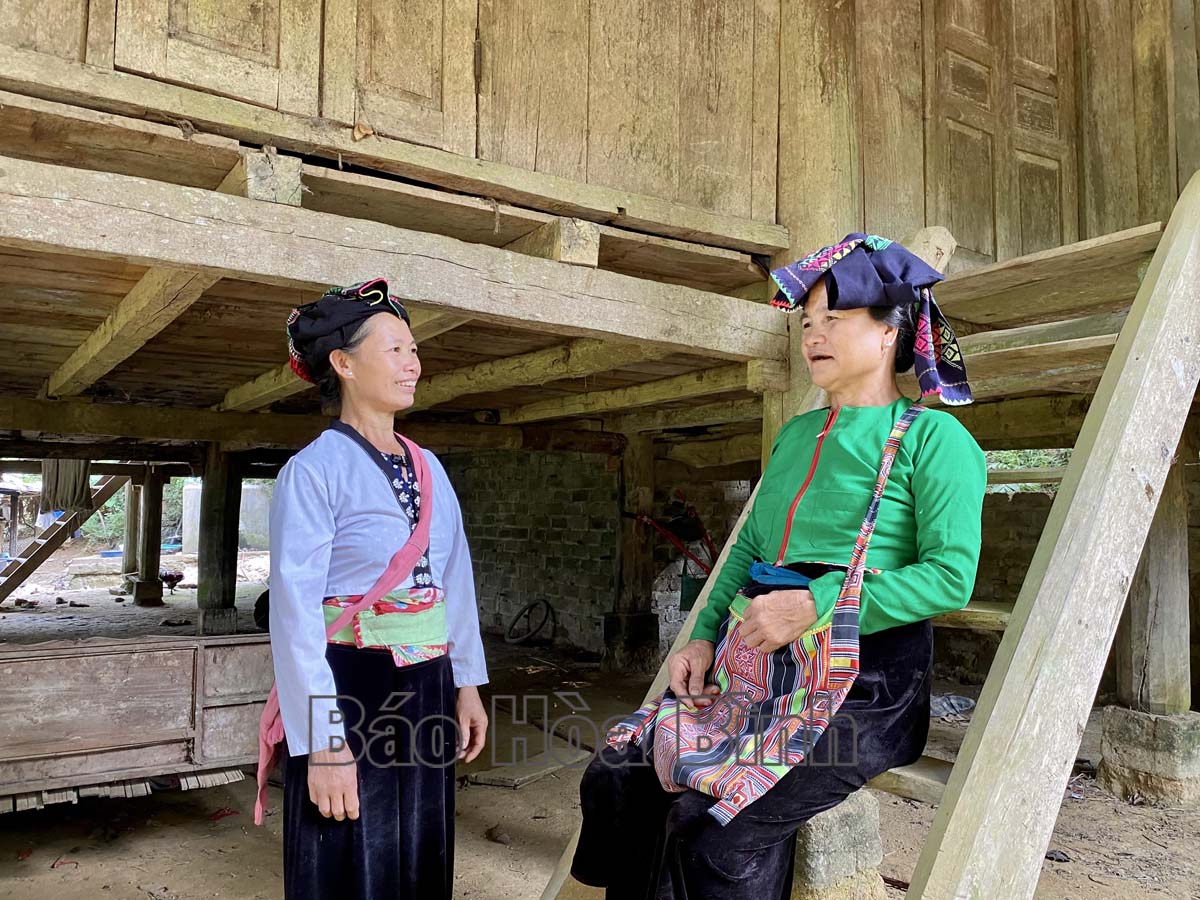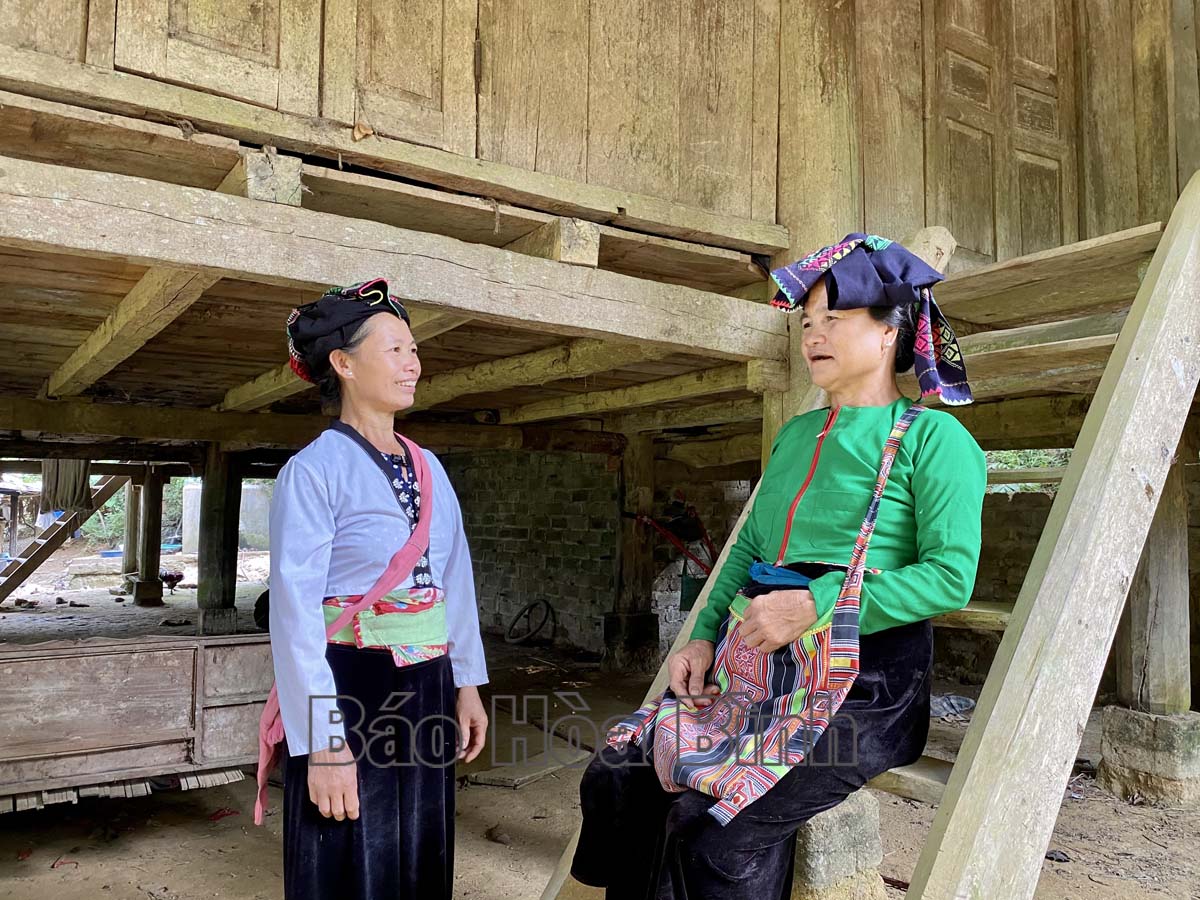
(HBO) – Whether harvesting rice, planting maize in the fields or picking vegetables and herbal leaves in the forest, or going to the market every day, Tay ethnic women in Muong Chieng commune, Da Bac district wear their ethnic costumes as a habit and pride and above all, an esteem of their cultural beauty.

Photo: Women in Chieng Cang hamlet of Muong Chieng
commune, Da Bac district, wear traditional Tay ethnic costumes in daily life.
Vice Chairman of the communal People’s Committee Bui Van Huong said as a hub of
the district, the commune has three ethic groups living together, including
Tay, Muong and Kinh. Of them, Tay people hold a majority. While Tay men usually
wear traditional costumes during festivals or special events at home, women
love wearing them every day.
In 2017, Muong worship festival was the most
outstanding event of Tay group in Da Bac district, which has been restored. It
dated back to a time when Tay people began to live and explore the land of
Muong Xong, known as Muong Chieng today, to settle down. Held at the beginning
of the year, the festival aims to commemorate ancestors and those who explored
and built the village as well as paid respect to the gods of land, water and
forest for endowing local residents with favourable weather conditions, a
peaceful, healthy life, and bumper harvests.
The local Tay community also preserves a new rice
festival which is held in the 10th lunar month. It is meant to thank
ancestors for a bountiful harvest and pray them to bless the next crop.
Depending on affordability of each family, those who can afford often make it
big, those who can't will make it small, but they must keep it. Especially,
recently, attention has been paid to learning Tay characters in the community.
With local teachers, the community learning centre opened dozens of Tay
language classes for about 300 people.
Along with preserving and promoting cultural values,
people of ethnic groups in the locality followed regulations in residential
areas. Weddings, funerals and festivals are organised in new and civilised
trend, typically in such hamlets as Na Muoi, Chum Nua, Chieng Cang, Ban Ha, and
Ke./.
With an increasingly vibrant and widespread emulation movement aimed at building cultured residential areas and cultured families, Yen Thuy District has been making steady progress toward improving both the material and spiritual well-being of its people, while fostering a civilized, prosperous, beautiful, and progressive community.
Once lacking recreational spaces and community facilities, Residential Group 2 in Quynh Lam Ward (Hoa Binh City) has recently received attention for the construction of a new, spacious, and fully equipped cultural house. The project followed the model of state support combined with public contributions in both labor and funding.
The "All people unite to build cultural life" movement, which has been effectively integrated with Kim Boi district’s socio-economic development goals, is fostering a lively spirit of emulation across local residential areas, hamlets, villages, public agencies, and enterprises. In addition, through the initiative, traditional cultural values are being preserved and promoted, while community solidarity and mutual support in poverty reduction and economic development are being strengthened.
A working delegation of the Hoa Binh provincial People’s Committee led by its Permanent Vice Chairman Nguyen Van Toan on June 11 inspected the progress of a project to build the Mo Muong Cultural Heritage Conservation Space linked to tourism services in Hop Phong commune, Cao Phong district.
Born and growing in the heroic land of Muong Dong, Dinh Thi Kieu Dung, a resident in Bo town of Kim Boi district, in her childhood was nurtured by the sweet lullabies of her grandmother and mother. These melodies deeply imprinted on her soul, becoming an inseparable part of her love for her ethnic group's culture. For over 20 years, this love for her hometown has driven Dung to research, collect, and pass down the cultural values of the Muong people to future generations.
In the final days of May, the Ethnic Art Troupe of Hoa Binh Province organized performances to serve the people in remote, mountainous, and particularly disadvantaged areas within the province. These were not just ordinary artistic shows, but they were the meaningful journeys aimed at spreading cultural values, enhancing the spiritual life of the people and contributing to the preservation of ethnic minority cultural identities.



